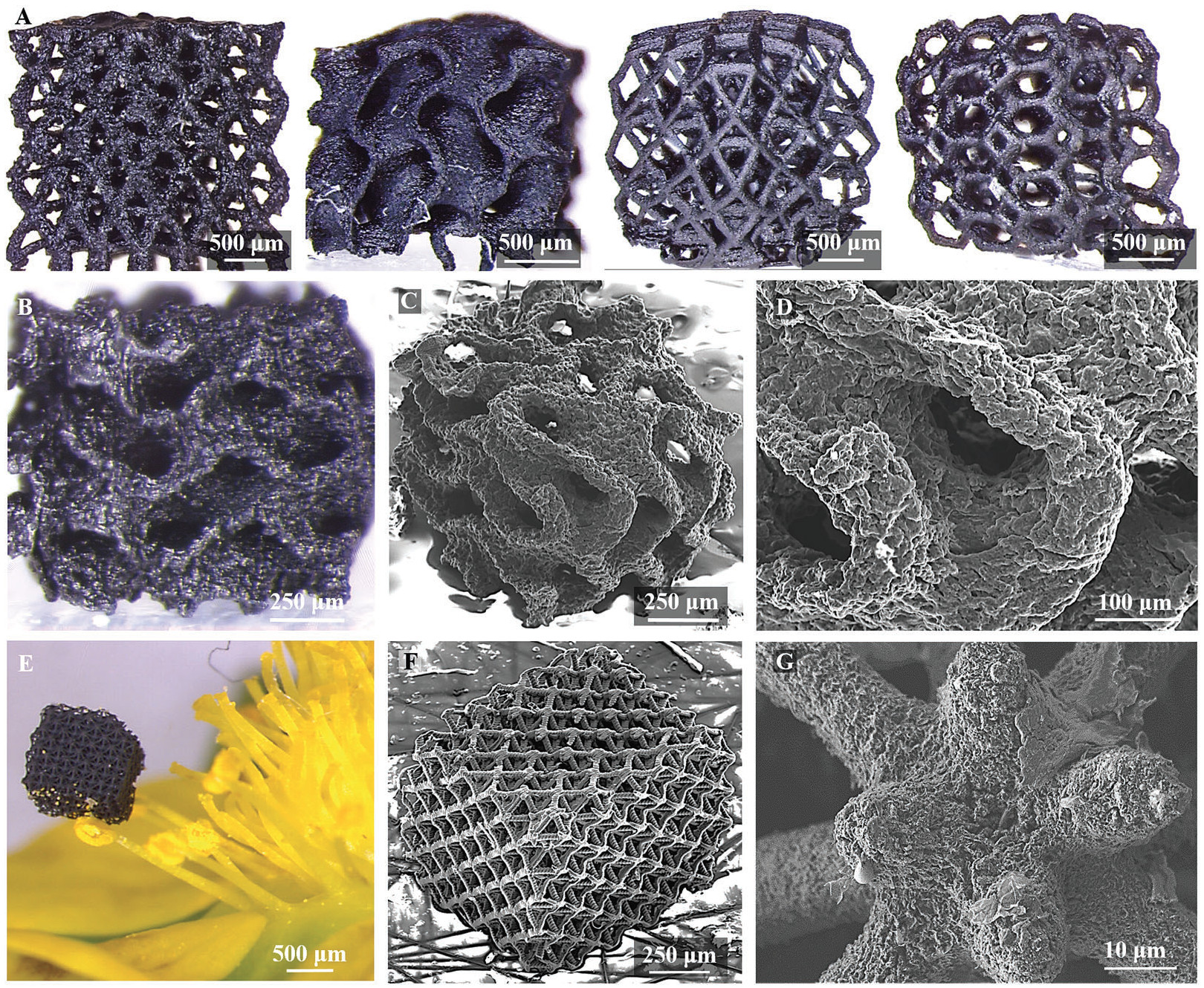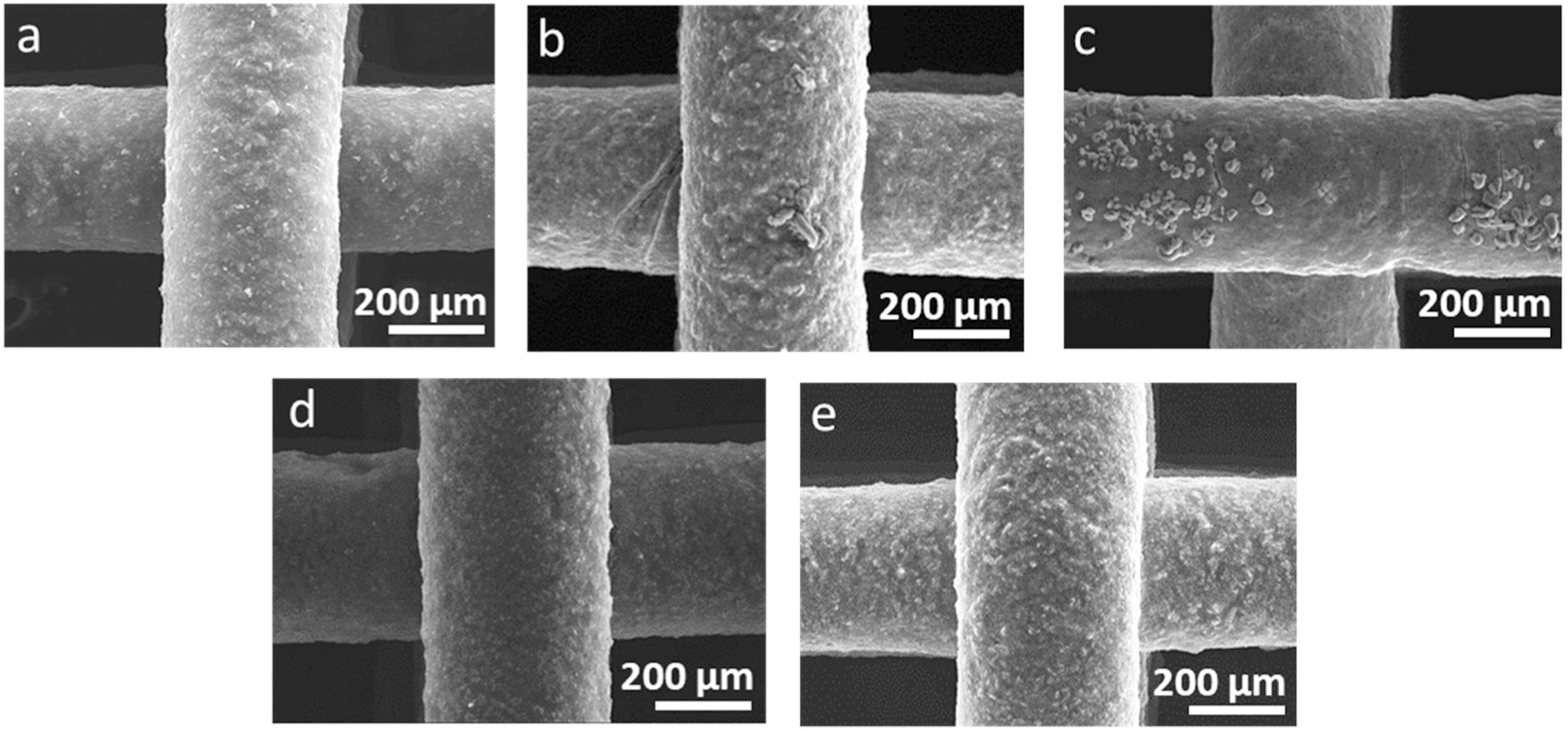Researchers from Spain’s Institute of Ceramics and Glass (ICV) and the Institute of Microelectronics and Nanosciences at Aix-Marseille University have used 3D printed graphene oxide scaffolds as the basis for lightweight hybrid structures which retain many of graphene’s desirable properties, including electrical conductivity and water adsorption capacity.
The researchers infiltrated the graphene oxide scaffolds with an alkoxide precursor solution to produce the hybrid structures, which display potential suitability for applications such as pollutant removal, water filtering, catalysis, drug delivery, and energy production and storage.

Limitations of 3D printing graphene
An allotrope of carbon, graphene has become a common element in research connected with energy production and microelectronics, as well as in the development of new technologies such as biomedicine and sensing. The material is highly desired for its lightweight properties, high electrical and thermal conductivity, and mechanical strength. Although, as much of graphene’s potential comes from deploying the material in its monolayer form, utilizing graphene for 3D printing still presents significant challenges.
However, researchers from Virginia Tech and Lawrence Livermore National Laboratory (LLNL) have taken further steps towards harnessing graphene’s potential after developing a high-resolution 3D printing method involving the dispersal of graphene within a gel to make a 3D printable resin. LLNL also worked with a team at the University of California, Santa Cruz, on a 3D printing technique for graphene-based aerogel electrodes used within energy storage devices.
Graphene has also been leveraged for the creation of 3D printed self-sensing armor and the modernization of transport networks. Elsewhere, new research has revealed how the structure of water changes when in contact with the surface of graphene.
Most recently, researchers from the University of Nottingham’s Centre for Additive Manufacturing made a breakthrough in the 3D printing of electronic devices with graphene, developing an inkjet-based 3D printing technique that could pave the way for replacing single-layer graphene as a contact material for 2D metal semiconductors.

Creating the graphene oxide-silica structures
Graphene oxide is considered a viable building block for producing 3D connected lightweight structures possessing high porosity, electrical conductivity, flexibility, and large surface area. The scientists aimed to address some of graphene oxide’s shortcomings, such as its mechanical weakness and vulnerability to flame exposure, by anchoring other materials to the 3D graphene structure to create a hybrid or composite material.
First, the researchers 3D printed graphene oxide scaffolds using a water-based ink prepared with graphene oxide nanosheets, a three-axis robocasting system from 3-D Inks LLC, and RoboCAD software. The scaffolds were printed via a 410 μm diameter needle into a cuboid consisting of 16 layers of evenly spaced rods, which were placed at right angles relative to the adjacent layers.
The structures were then frozen by plunging them into liquid nitrogen for 10 seconds before being lyophilized (freeze-dried) and treated in a graphitic furnace at 1,200 degrees celsius to enhance graphene oxide reduction. At this point, the 3D printed graphene oxide structures measured 12x12x5mm.
The next stage involved infiltrating the graphene oxide scaffolds through what the researcher’s described as the sol-gel route, which involves low-temperature gel crosslinking with ammonia vapors.
Two solutions were prepared containing tetraethyl orthosilicate, ethanol, deionized water, and hydrochloric acid, named SiO2 sol (silica) and SiAl sol (silica-alumina). The graphene oxide scaffolds were half immersed in each sol for five minutes within an airtight container, before being placed on a resting platform just above the liquid level. The samples were held here for 24 hours at room temperature in order to induce extended condensation and rigidness of the impregnated structure through ammonia catalysis. Afterwards, the scaffolds were washed with ethanol to remove any vapor residue.

Results and potential applications
The researchers found that the 3D printed graphene oxide-silica structures remained highly porous, while their compression strength increased between 250-800% compared to the untreated graphene oxide scaffolds. The hybrid structures also maintained “significant electrical conductivities”, but the main enhancement was seen in the structures’ hydrophilic nature.
The scaffold’s ultra-fine silica-based covering was observed to have an important influence on the structure’s wetting characteristics. The structure became totally hydrophilic in comparison to the untreated graphene oxide scaffold, while its water adsorption capacities were improved ten-fold.
The enhanced performance of the graphene oxide-silica structures suggests they could be suited to use as absorbers, pollutants removal, gas sensing, thermal storage, or within photocatalytic water splitting applications.
Further details of the study can be found in the article titled “Robust and conductive mesoporous reduced graphene oxide-silica hybrids achieved by printing and the sol gel route”, published in the Journal of the European Ceramic Society. The study is co-authored by J.J. Moyano, J. Loizillon, D. Pérez-Coll, M. Belmonte, P. Miranzo, D. Grosso, and M. I. Osendi.
Subscribe to the 3D Printing Industry newsletter for the latest news in additive manufacturing. You can also stay connected by following us on Twitter and liking us on Facebook.
Be sure to subscribe to the Another Dimension podcast on your chosen podcast player to make sure you never miss an episode.
Looking for a career in additive manufacturing? Visit 3D Printing Jobs for a selection of roles in the industry.
Featured image shows comparing scanning electron microscope (SEM) images of the different materials. (a) the original graphene oxide scaffold, (b-e) graphene oxide-silica structures. Image via Journal of the European Ceramic Society.



